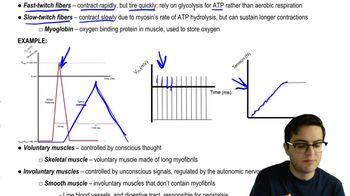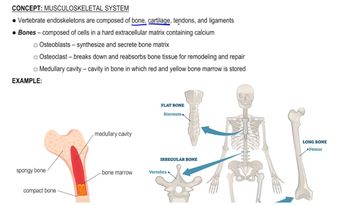Table of contents
- 1. Introduction to Biology2h 42m
- 2. Chemistry3h 40m
- 3. Water1h 26m
- 4. Biomolecules2h 23m
- 5. Cell Components2h 26m
- 6. The Membrane2h 31m
- 7. Energy and Metabolism2h 0m
- 8. Respiration2h 40m
- 9. Photosynthesis2h 49m
- 10. Cell Signaling59m
- 11. Cell Division2h 47m
- 12. Meiosis2h 0m
- 13. Mendelian Genetics4h 44m
- Introduction to Mendel's Experiments7m
- Genotype vs. Phenotype17m
- Punnett Squares13m
- Mendel's Experiments26m
- Mendel's Laws18m
- Monohybrid Crosses19m
- Test Crosses14m
- Dihybrid Crosses20m
- Punnett Square Probability26m
- Incomplete Dominance vs. Codominance20m
- Epistasis7m
- Non-Mendelian Genetics12m
- Pedigrees6m
- Autosomal Inheritance21m
- Sex-Linked Inheritance43m
- X-Inactivation9m
- 14. DNA Synthesis2h 27m
- 15. Gene Expression3h 20m
- 16. Regulation of Expression3h 31m
- Introduction to Regulation of Gene Expression13m
- Prokaryotic Gene Regulation via Operons27m
- The Lac Operon21m
- Glucose's Impact on Lac Operon25m
- The Trp Operon20m
- Review of the Lac Operon & Trp Operon11m
- Introduction to Eukaryotic Gene Regulation9m
- Eukaryotic Chromatin Modifications16m
- Eukaryotic Transcriptional Control22m
- Eukaryotic Post-Transcriptional Regulation28m
- Eukaryotic Post-Translational Regulation13m
- 17. Viruses37m
- 18. Biotechnology2h 58m
- 19. Genomics17m
- 20. Development1h 5m
- 21. Evolution3h 1m
- 22. Evolution of Populations3h 52m
- 23. Speciation1h 37m
- 24. History of Life on Earth2h 6m
- 25. Phylogeny2h 31m
- 26. Prokaryotes4h 59m
- 27. Protists1h 12m
- 28. Plants1h 22m
- 29. Fungi36m
- 30. Overview of Animals34m
- 31. Invertebrates1h 2m
- 32. Vertebrates50m
- 33. Plant Anatomy1h 3m
- 34. Vascular Plant Transport1h 2m
- 35. Soil37m
- 36. Plant Reproduction47m
- 37. Plant Sensation and Response1h 9m
- 38. Animal Form and Function1h 19m
- 39. Digestive System1h 10m
- 40. Circulatory System1h 57m
- 41. Immune System1h 12m
- 42. Osmoregulation and Excretion50m
- 43. Endocrine System1h 4m
- 44. Animal Reproduction1h 2m
- 45. Nervous System1h 55m
- 46. Sensory Systems46m
- 47. Muscle Systems23m
- 48. Ecology3h 11m
- Introduction to Ecology20m
- Biogeography14m
- Earth's Climate Patterns50m
- Introduction to Terrestrial Biomes10m
- Terrestrial Biomes: Near Equator13m
- Terrestrial Biomes: Temperate Regions10m
- Terrestrial Biomes: Northern Regions15m
- Introduction to Aquatic Biomes27m
- Freshwater Aquatic Biomes14m
- Marine Aquatic Biomes13m
- 49. Animal Behavior28m
- 50. Population Ecology3h 41m
- Introduction to Population Ecology28m
- Population Sampling Methods23m
- Life History12m
- Population Demography17m
- Factors Limiting Population Growth14m
- Introduction to Population Growth Models22m
- Linear Population Growth6m
- Exponential Population Growth29m
- Logistic Population Growth32m
- r/K Selection10m
- The Human Population22m
- 51. Community Ecology2h 46m
- Introduction to Community Ecology2m
- Introduction to Community Interactions9m
- Community Interactions: Competition (-/-)38m
- Community Interactions: Exploitation (+/-)23m
- Community Interactions: Mutualism (+/+) & Commensalism (+/0)9m
- Community Structure35m
- Community Dynamics26m
- Geographic Impact on Communities21m
- 52. Ecosystems2h 36m
- 53. Conservation Biology24m
47. Muscle Systems
Musculoskeletal System
Problem 11a`
Textbook Question
Distance runner Paula Radcliffe has won dozens of long-distance races and held the women's world record for the marathon since 2003. Scientists, trainers, and athletes alike have wondered about the extent to which muscle structure and function contribute to success in athletes such as Radcliffe.
What makes elite distance runners so good?
Are their muscles somehow different from those of less successful athletes and non-athletes?
Compare and contrast the structure and function of the three types of skeletal muscle fibers.
 Verified step by step guidance
Verified step by step guidance1
Begin by identifying the three types of skeletal muscle fibers: Type I (slow-twitch), Type IIa (fast-twitch oxidative), and Type IIb (fast-twitch glycolytic). Each type has distinct characteristics that contribute to their function.
Type I fibers are known for their endurance capabilities. They have a high density of mitochondria, which allows them to efficiently use oxygen for aerobic respiration. This makes them ideal for long-duration activities like marathon running. They are also rich in myoglobin, giving them a red color.
Type IIa fibers are intermediate fibers that possess characteristics of both Type I and Type IIb fibers. They can generate more force than Type I fibers and are capable of both aerobic and anaerobic metabolism. This makes them versatile for activities that require both endurance and power.
Type IIb fibers are designed for short bursts of power and speed. They have fewer mitochondria and rely primarily on anaerobic glycolysis for energy production, which allows them to generate quick and powerful contractions. However, they fatigue quickly compared to Type I fibers.
Compare the functional implications: Type I fibers are crucial for endurance athletes like Paula Radcliffe, as they support sustained activity over long periods. Type IIa fibers provide a balance of endurance and power, while Type IIb fibers are more suited for activities requiring short, explosive movements. Understanding these differences helps explain why elite distance runners excel in their sport.
 Verified video answer for a similar problem:
Verified video answer for a similar problem:This video solution was recommended by our tutors as helpful for the problem above
Video duration:
3mPlay a video:
Was this helpful?
Key Concepts
Here are the essential concepts you must grasp in order to answer the question correctly.
Skeletal Muscle Fiber Types
Skeletal muscles are composed of three main types of fibers: Type I (slow-twitch), Type IIa (fast-twitch oxidative), and Type IIb (fast-twitch glycolytic). Type I fibers are endurance-oriented, relying on aerobic metabolism, while Type II fibers are suited for short bursts of power, with Type IIa being more fatigue-resistant than Type IIb. Understanding these differences is crucial for analyzing muscle performance in athletes.
Recommended video:
Guided course

Muscle Fibers and Sarcomeres
Muscle Fiber Structure
The structure of muscle fibers varies among the three types, influencing their function. Type I fibers have a high density of mitochondria and capillaries, supporting sustained aerobic activity. Type IIa fibers also have a significant mitochondrial presence but are more adaptable to anaerobic conditions. Type IIb fibers have fewer mitochondria and rely heavily on anaerobic metabolism, making them ideal for explosive movements.
Recommended video:
Guided course

Muscle Fibers and Sarcomeres
Muscle Fiber Function
Functionally, muscle fibers differ in contraction speed and endurance. Type I fibers contract slowly but sustain activity over long periods, ideal for endurance sports like marathon running. Type IIa fibers offer a balance between speed and endurance, suitable for middle-distance events. Type IIb fibers contract rapidly and powerfully but fatigue quickly, making them less suited for endurance but perfect for sprinting and high-intensity activities.
Recommended video:
Guided course

Muscle Fibers and Sarcomeres

 2:08m
2:08mWatch next
Master Muscle System and Skeleton with a bite sized video explanation from Jason
Start learningRelated Videos
Related Practice




















































